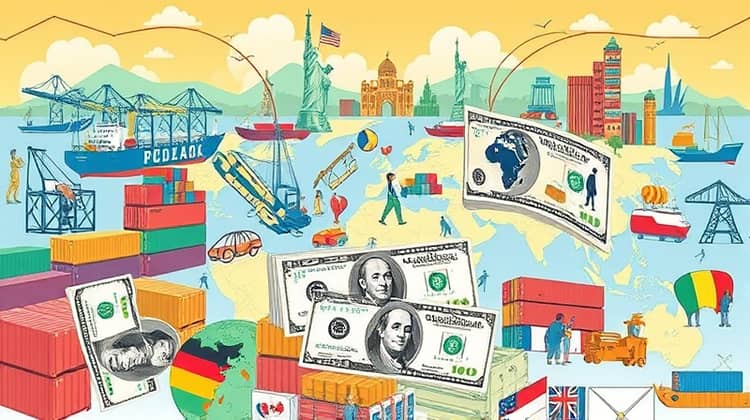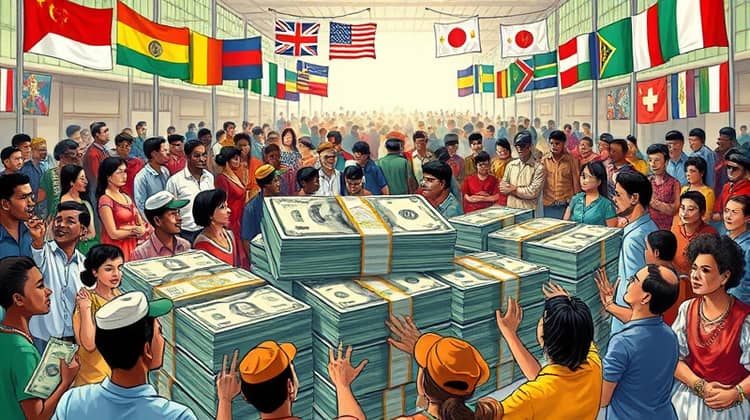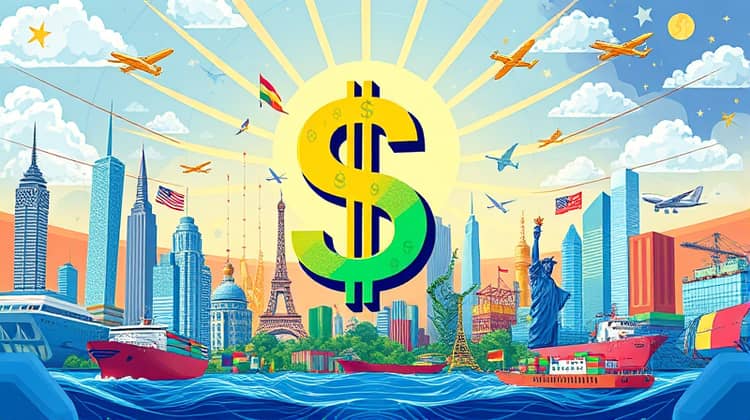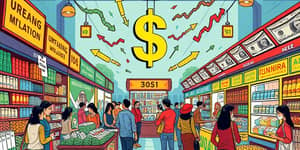The strength of the US dollar in global markets is influenced by a diverse set of drivers that touch upon economic, political, and social factors. Understanding these elements is crucial for investors and policymakers alike, as they can significantly impact currency exchange rates and investment flows.
Firstly, the US dollar is often seen as a gauge of economic health. A strong US economy tends to bolster confidence in the dollar, attracting foreign investment and enhancing its value. Additionally, because the dollar is the world's primary reserve currency, peripheral factors like global trust in US financial markets also play a vital role in maintaining its strength.
Moreover, the interplay between supply and demand in foreign exchange markets further dictates the dollar's performance. Factors like interest rates, political stability, and economic growth contribute to the ongoing dynamics that affect the dollar's value globally.
1. Economic Stability and Growth

The economic stability and growth of the United States play a pivotal role in bolstering the US dollar. When the US economy shows signs of strong growth characterized by low unemployment rates and robust consumer spending, it tends to increase confidence in the dollar. Investors are more likely to invest in US assets, which increases demand for the dollar and, as a result, its value.
In a globally interconnected economy, the strength of the US economy often has ripple effects across markets worldwide. Countries with trade ties to the US may see their currencies rise or fall in tandem with the US dollar, reflecting the interdependence of global financial ecosystems.
- America's GDP growth significantly impacts investor confidence.
- Low unemployment and rising wages contribute to overall economic stability.
- The strength of the US manufacturing sector boosts dollar demand.
As a result, when the US economy performs well, the dollar's strength is not just an indicator but a driving force behind global trade and investments.
2. Interest Rates and Monetary Policy

Interest rates set by the Federal Reserve are crucial in determining the dollar's strength. Higher interest rates typically attract foreign investors seeking better returns on their investments, increasing demand for the dollar. Conversely, lower interest rates may diminish the dollar's appeal, as investors look for hotter markets.
Furthermore, the Federal Reserve's monetary policy decisions play a significant role in shaping market perceptions. Aggressive policy tightening or easing can lead to swift changes in dollar valuation, affecting everything from trade balances to foreign direct investments.
- A rise in interest rates generally strengthens the dollar.
- Investor sentiment shifts based on monetary policy expectations.
- Global comparisons with other central banks affect dollar demand.
Ultimately, the US dollar's value often reacts in tandem with Federal Reserve meetings and interest rate announcements, making these events critical for traders and investors.
3. Safe Haven Status

The US dollar is often regarded as a 'safe haven' during times of global uncertainty and market volatility. Investors tend to flock to the dollar when geopolitical tensions arise, fearing instability in other regions or currencies.
This perception is underpinned by the size and liquidity of US financial markets, which offer security in tumultuous times. The dollar's safe haven status not only strengthens its value but also emboldens its role in international transactions.
- During crises, investors prefer the stability of the dollar.
- Historical instances of dollar strength during market downturns.
- Global events affecting investor sentiment can bolster demand for the dollar.
4. Trade and Investment Flows

Trade dynamics significantly impact the strength of the US dollar. The US remains one of the largest consumers and importers globally, meaning that foreign businesses seek to receive payments in dollars, thus reinforcing its value.
Investment flows into US markets, whether in equities, bonds, or foreign direct investment, further enhance demand for the dollar. As foreign entities invest in the US economy, they increase their dollar holdings, which solidifies its status in global transactions.
- Trade deficits can weaken the dollar in the short term.
- Strong inflows of foreign investment bolster dollar strength.
- Trade agreements can enhance dollar use in international transactions.
5. Financial Markets and Dollar-Denominated Assets

The robustness of US financial markets is instrumental to the dollar's international strength. A deep and liquid market for dollar-denominated assets, including treasury bonds and stocks, attracts global investors seeking safety and yields on their capital.
Many international portfolios incorporate the US dollar as a primary asset, leading to sustained demand. This robust trading environment allows the dollar to maintain its stature as the world's dominant currency.
6. Network Effects and Dollarization

Network effects play a critical role in the dollar's prominence in global markets. As more international transactions and trade agreements are conducted in dollars, it creates a cycle that strengthens dollar demand. Consequently, more entities and countries adopt the dollar, further entrenching its position as the primary global currency.
This phenomenon, often termed 'dollarization', occurs when countries, particularly those with unstable economies, opt to use the dollar for transactions, lending, and savings to capitalize on its strength and stability.
- Countries with unstable currencies may prefer dollarization.
- Increased global transactions in dollars reinforce its network effect.
- Trading in dollars can simplify international business dealings.
7. Geopolitical Factors

Geopolitical stability significantly influences the dollar's strength. Changes in political leadership, conflicts, or shifts in international relations can cause volatility in currencies. A stable political environment in the US increases confidence in the dollar, while uncertainty may lead to fluctuations.
Geopolitical tensions elsewhere can also drive demand for the dollar as countries and investors seek safety amid uncertainty. For example, conflicts in major oil-producing regions often lead to increased dollar demand as oil trades globally are primarily settled in dollars.
Conclusion

In summary, the strength of the US dollar in global markets arises from a complex interplay of factors including economic stability, interest rates, safe haven perceptions, trade dynamics, and geopolitical scenarios. Each component contributes to a layered understanding of why the dollar holds such a formidable position in the world economy.
Recognizing these drivers is crucial not just for those involved in finance but also for policymakers and businesses navigating international waters. The strength of the dollar doesn't exist in isolation; it is affected by global conditions, investor sentiment, and economic policies.
As the global economy continues to evolve, the influences on the dollar's strength may shift, underscoring the importance of monitoring these factors as they develop.










